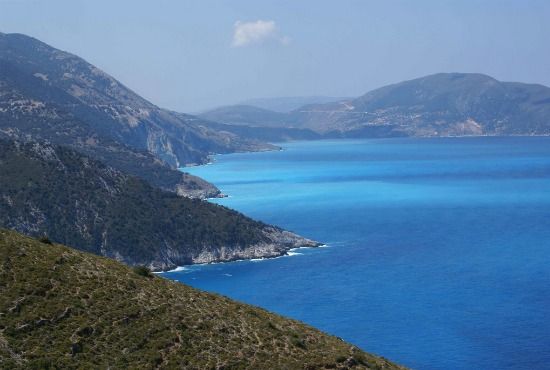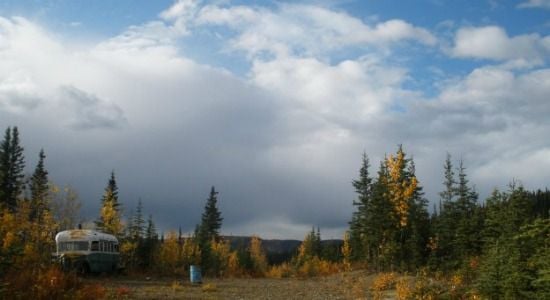From the Joshua Tree to The Slaughtered Lamb: Destinations of Story and Song
Should you go to Cephalonia, bring a copy of the Odyssey—perhaps the truest guidebook to this Greek island
/https://tf-cmsv2-smithsonianmag-media.s3.amazonaws.com/filer/20120427080032U2_PrideSMALL.jpg)
Satellite views of the Earth plus the advent of digital photography and remote communication technology have rendered virtually no place on the planet unexplored—or unseen, anyway. To be an explorer in the old days was a legitimate and noble occupation, but traveling today is much less about first-time discovery than it is about rediscovery. But there is a particular thrill in going where certain others have gone before, to walk where they walked and to know that their eyes, too, played across the very landscape before you. So forget the world’s last lingering corners of wilderness for a moment, or the last unsettled islands, and consider these special sites of interest where writers, artists, musicians and heroes once walked:
The toppled Joshua tree. On a cold December day in 1986, the biggest budding rock band of the time—a group of young Irishmen known as U2—walked into the Mojave desert with photographer Anton Corbijn, posed before a lanky-limbed Joshua tree and created one of the most famous rock and roll image galleries, portrayed on the album sleeve of U2′s 1987 album The Joshua Tree. The images spurred a quiet pilgrimage of followers seeking to locate the Joshua tree—the Joshua tree, that is, the one shown on the album. The site is located near Death Valley, and presumably the first U2 fan to locate the place found it by following the skyline seen in the famed black and white photographs. Today, the tree itself lies fallen and broken, while a shrine and plaque, a variety of stone-based artwork and four stone circles indicating where each U2 band member once stood still give visitors a chilling sense of rediscovery.
The Slaughtered Lamb pub. “I vote we go back to The Slaughtered Lamb.” So said Jack Goodman, played by Griffin Dunne, to his friend David Kessler in the 1981 horror cult classic An American Werewolf in London. Two young American men, students on vacation, were walking on the cold, wild moors of Northern England not far from a fictional village called East Proctor. The pair had just left the town’s spooky village pub, The Slaughtered Lamb, where a bizarre cast of locals sent the Americans packing with crazy talk suggesting monsters and witchcraft. But some distance out of the town, piercing half-man howls echoed through the fog and scared Jack and David back again toward the pub—but a werewolf got them first. Jack was killed, and David, played by David Naughton, was rendered a once-per-month monster whose own days would soon end after a bloody rampage in the streets of London. Today, the village of Crickadarn, Wales, which portrayed East Proctor, remains a vaguely known source of attraction for traveling film buffs. If you go, stick to the road, keep clear of the moors and take some good pics—and perhaps post driving directions in the comment box below. Heads up: The interior of The Slaughtered Lamb is actually in The Black Swan, a pub in Ockham, Surrey, in case you should want a pint.
Cephalonia, home island of Odysseus. Just which Aegean waters Homer’s hero stirred and which Greek islands he passed as he voyaged home from Troy may be unclear, but we may know just where Odysseus landed at the journey’s end, the island he called home. Named Ithaca in The Odyssey, the home island of Odysseus is believed to be that now called Cephalonia, off Greece’s west coast, as described in Smithsonian in 2006. An amateur scholar named Robert Bittlestone made this claim after studying translations of Homer’s narration and touring possible islands in Greece, surveying the landscapes and imagining just where was the likeliest abode of Odysseus. The modern-day island of Ithaca seems not to be the old Ithaca—but on Cephalonia, Bittlestone believes he can even trace the footsteps of Odysseus from the moment he came ashore at Phorcys Bay to the hut of the benevolent swineherd to—at last—the cone-shaped hill called Kastelli, where Odysseus’ wife Penelope and their son Telemachus endured for years the hounding of suitors and drunkards—men who died in a bloody, skull-crashing fight when Odysseus finally walked through his door. Should you go to Cephalonia, bring along a pair of binoculars and a copy of the Odyssey, perhaps the truest guidebook there is to this lesser-known Greek island.

Fairbanks City Bus 142. The broken-down bus in which a young man lived his final days in Alaska in 1992 has become an attraction for back-country visitors in recent years. Made famous by Jon Krakauer in his 1995 book Into the Wild, Chris McCandless, who took up the alias Alexander Supertramp, has been the subject of scorn, sympathy and admiration. He came to the interior Alaskan bush country with idealistic visions of living off the land in a place void of human contact and government control—but things didn’t go well. Though he had a rifle, he failed to feed himself adequately, and after more than 100 days in the wild, he died of starvation inside the retired Fairbanks city bus. McCandless’ tribe of followers exploded in numbers following the 2007 movie adaptation of Krakauer’s book, and today many—too many, perhaps—visit the bus each summer and fall, posing for photos exactly as McCandless did, signing their names inside the bus and taking pieces away. Locals have begun to consider the defunct vehicle an attractive nuisance. Though the bus has long served as a campsite for local hunters, there has been talk of removing it from the bush. Go see this piece of junk while you can.
Steinbeck Country. It’s sunburned, desolate and populated by pigs and cougars—and everywhere you go in the hill country of California’s Monterey and San Benito Counties, you are likely to be viewing the same wild country that inspired the writing of John Steinbeck. While you have a sure bet at mingling with the ghosts of Steinbeck’s past at tourist hubs like Cannery Row, the real excitement lies farther afield—where one might explore the scrubby back country and ask of suspect homesteads, trees and road crossings: “Was Steinbeck here?” Eight years ago while exploring California on a long bicycle tour, this very question came to me, along with a strange and eerie feeling in my gut, when I came upon a lonely intersection in Monterey County, far from any stores or farms or gas stations. I was riding northward on Peach Tree Road, parallel to and east of the Salinas Valley, and came to the junction with Long Valley Road, which led deep into the hill country to the west. I instantly recalled Steinbeck’s The Long Valley and felt with certainty that the author had walked up this road in its unpaved days, through these dry expanses of classic California oak and scrub, absorbing impressions of the land that would later move him to write. But in the lonely hills of Steinbeck Country, fiction overlays reality, and whether here once was a god unknown, or a red pony, or a man named Adam Trask—who really knows but the writer who invented them all?
There are many other literary journeys, sites to see and paths to follow:
Jack Kerouac‘s route in On the Road. Kerouac disguised many of his real-life characters with clever pseudonyms in On the Road, yet travelers and journalists seem to have pinned down where he went, drank, ate and slept, from San Luis Obispo to Colorado to New York.
The pond and cabin of Henry David Thoreau‘s Walden days.
The Overlook Hotel of The Shining. Film director Stanley Kubrick relied on multiple locations, including a set in England, for shooting his 1980 horror hit, but for a face-to-face, head-on look at the hotel that swallowed up the Torrance family for a long, frightening winter, head straight to the Timberline Lodge in Oregon.
The Abbey Road crossing in London as seen on the Beatles album. Should you go, take three long-haired friends, set up a camera and don’t forget the most important part: One of you must walk barefoot.

Planning Your Next Trip?
Explore great travel deals
Smithsonian magazine participates in affiliate link advertising programs. If you purchase an item through these links, we receive a commission.
/https://tf-cmsv2-smithsonianmag-media.s3.amazonaws.com/accounts/headshot/Off-Road-alastair-bland-240.jpg)
/https://tf-cmsv2-smithsonianmag-media.s3.amazonaws.com/accounts/headshot/Off-Road-alastair-bland-240.jpg)